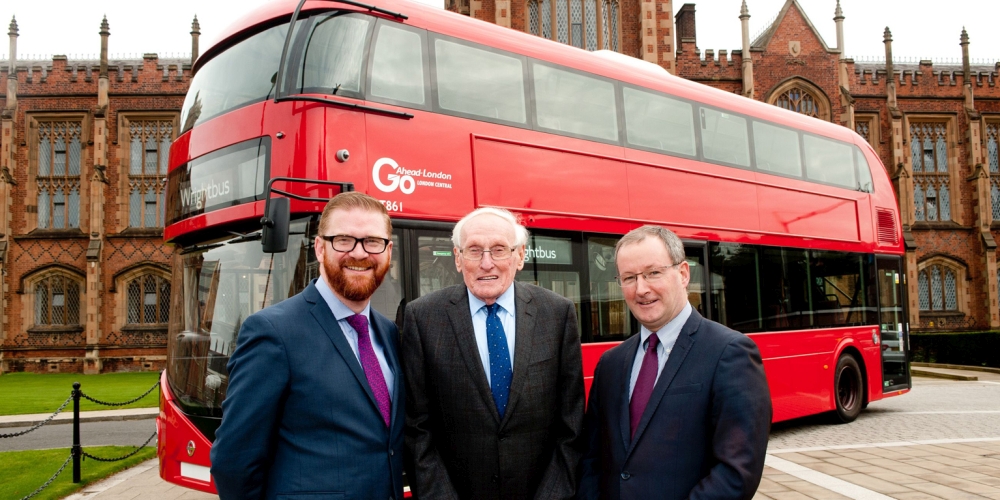As the Wrights Group marks its 70th anniversary year, a new centre named after one of the company’s founders has been established at Queen’s University Belfast, the William Wright Technology Centre.
The new facility at Queen’s School of Mechanical and Aerospace Engineering has been named after Dr William Wright CBE, not only in recognition of his contribution to industry in Northern Ireland, but also his relentless drive in the promotion and development of new innovation and technology to reduce fossil fuel usage and emissions that are harmful to the environment.
The project is a joint venture between the Wrights Group, which has currently invested £300,000 in the centre – a figure which is also being matched by Queen’s University – and an upward potential investment figure of more than £6m. The key aim of the centre is to promote research and advanced engineering to facilitate the creation and development of technologies suitable for today’s bus industry, particularly as these needs become increasingly complex.
Currently housed in temporary accommodation, a new permanent premises for the centre has been identified within Queen’s campus and is scheduled to open in Summer 2017. A team of seven employees are already working on a range of research projects including drive cycle modelling, thermal modelling, vibration related fatigue and lifecycle analysis, including topics such as cost of manufacturing, maintenance and operation. Future steering and suspension based research and development are also covered.
Welcoming the announcement the Economy Minister Simon Hamilton, MLA said, “This Executive’s ambition is to transform the Northern Ireland economy into one underpinned by innovation and creativity. The evidence shows that businesses are more productive when they innovate and collaborate. Those businesses are more inclined to export and employ more highly qualified people. Wrightbus has a proven track record in innovation and creativity and is a familiar sight on the streets across the world. Queen’s University has a commitment to excellence in research and innovation and making a positive global impact. I commend this venture, which will build on and further promote our history of innovation and entrepreneurship and assist in transforming our economy.”
Queen’s Vice-Chancellor Professor Patrick Johnston, said: “We are delighted and honoured to name our technology centre after Dr Wright, a well-respected figure in the Northern Ireland business community and the global bus industry. Queen’s partnership with Wrightbus is one of our longest standing industry collaborations. Together we are leading the way in the development of some of the world’s most advanced hybrid engines. The new William Wright Technology Centre will ensure continued development of even better and cleaner environmental technology for advanced passenger transport in the UK and around the world. It will also give our students the opportunity to work closely with Wrightbus to develop their technical, research and employability skills.
“Queen’s is the UK’s leading institution for research commercialisation. Our people work with businesses and industry groups around the world on the research, development and commercialisation of new technologies in areas as diverse as healthcare, food and cyber security. Like our partnership with Wrightbus, these collaborations deliver world-class research that brings commercial, economic and societal benefits to Northern Ireland and further afield.”
Dr William Wright CBE founded the original company with his father in 1946 and in 2017 will celebrate his 90th birthday. He also heads up the alternative driveline division at Wrightbus and he said: “We have a long established relationship with Queen’s University and are pleased to be involved in the further expansion of the technology centre. This is a new and exciting facility that will continue to stimulate fresh thinking and encourage innovation.
“At Wrightbus we believe our ‘special relationship’ with Queen’s University sets us apart from many other manufacturers within our industry. This is important work that helps us to not only attract and nurture the best engineering talent, it will also lead to the identification of cutting edge projects that will ultimately become viable commercial developments. This applies not only for the bus sector but also for the wider transport industry.
“Over the years we have demonstrated our commitment to the design and build of cleaner and greener buses and are increasingly at the forefront of electric technology in today’s bus industry and as such, we are very well placed to work with the team on this important initiative.”

